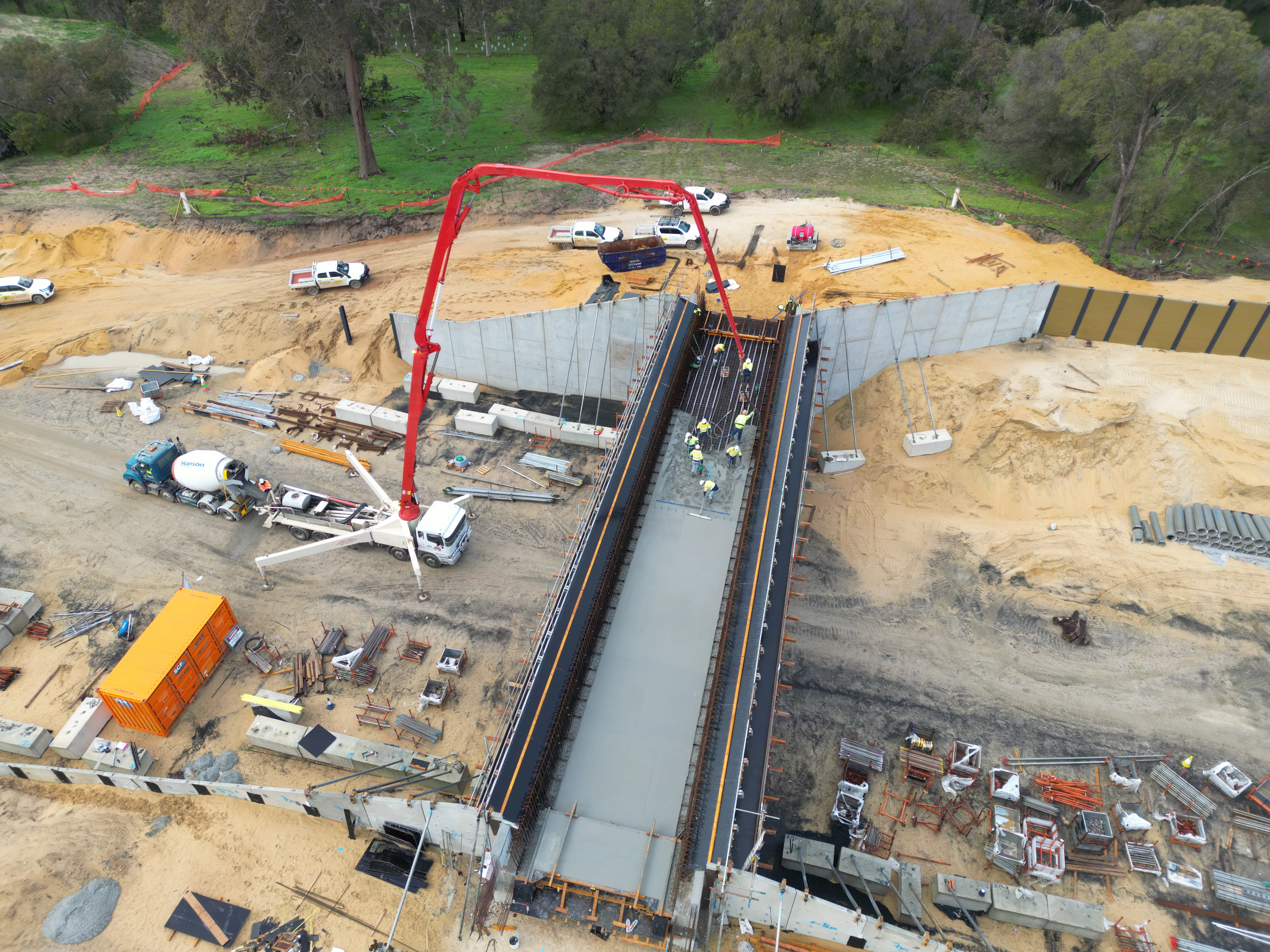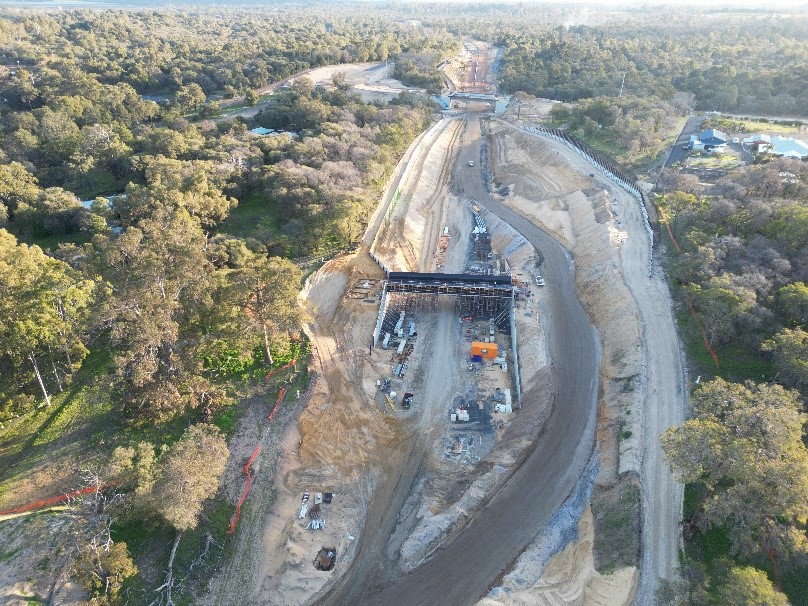Engineering on the wild side - Gelorup fauna land bridge taking shape
Significant progress is continuing on the Gelorup Fauna Land Bridge, one of 12 bridges being built as part of the Wilman Wadandi Highway (Bunbury Outer Ring Road Project). This bridge, designed to support the wildlife crossing and assist in maintaining local biodiversity, is unique due to its features in both construction methods and design choices.
Published: 10 October 2024, Updated: 10 October 2024
The Fauna Land Bridge is the only bridge on the Wilman Wadandi Highway with the beam cast directly on-site, as the design needed to minimise the depth of the structure to reduce earthworks and maintain the lower road level. The bridge beams for all other bridges are pre-cast off-site and transported to the location for installation.
Structured Construction Process
The construction process for the bridge follows a highly structured, 11-step sequence laid out by the designers to ensure safety and efficiency. While some modifications to the process were made after consultation with the design team, the sequence is strictly followed to guide the subcontractor’s work and keep the project on track.
Key Structural Elements
The bridge’s structure features segmental mechanically stabilised earth walls forming the front face, providing essential support. Two main columns are connected by a capping beam, with bearings placed on top to support the in-situ beam.

The concrete pour occurring for the bridge base slab

The fauna crossing bridge with the Yalinda Drive overpass in the background
Falsework, Soffit, and Reinforced Concrete
Falsework is put in place to support the bridge during construction, while the ‘soffit’ forms the flat base on which the beam is constructed. The reinforced concrete beam is being built in two stages: the base and the side walls. Both side walls are poured at the same time, which is crucial to maintaining balance and ensuring structural stability.
Post-Tensioning Process
Post-tensioning is then applied to reinforce the beam. Ducts have been installed within the base slab of the beam, and once the concrete is poured, post tensioning strands are pushed through the ducts. The strands are tensioned to control deflection of the beam. This method offers more flexibility than pre-tensioning (the technique used on all other bridges across the project), as pre-tensioned beams are harder to transport due to the built-in tension. Once the strands are tensioned, the beam achieves its full load-bearing capacity.
Final Structure
With post-tensioning complete, the Fauna Land Bridge will be fully capable of bearing loads, ensuring a safe and stable wildlife crossing over the highway. The next steps are to fill the beam trough with fully saturated sand suitable for the proposed vegetation which will be planted.